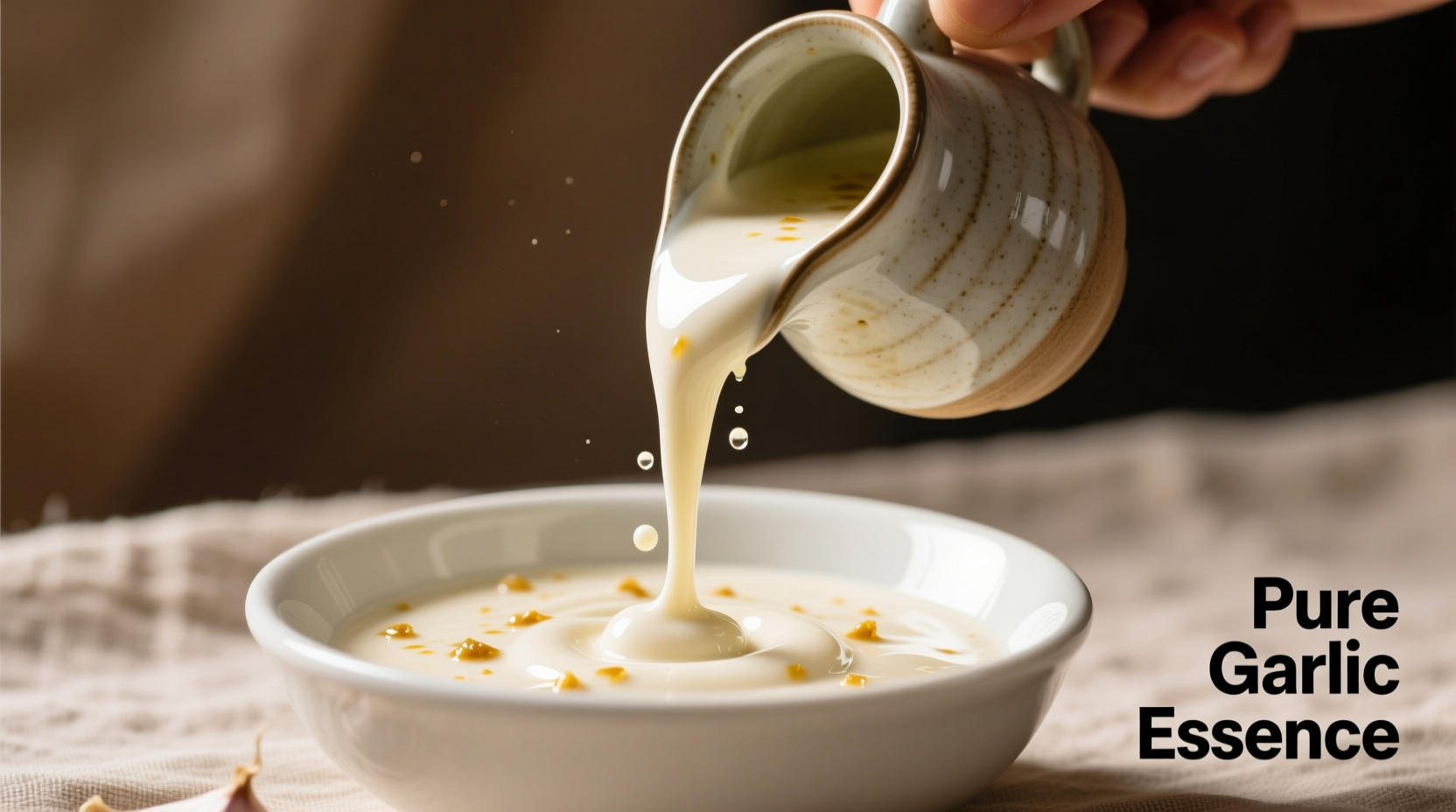Understanding which garlic sauce complements specific dishes transforms ordinary meals into culinary experiences. This guide reveals the science behind garlic transformation and practical applications that professional chefs use to maximize flavor impact while avoiding common preparation pitfalls.
The Evolution of Garlic Sauce Techniques
Garlic's journey from ancient medicinal use to kitchen staple spans millennia. Historical records show Egyptian workers consumed garlic for strength during pyramid construction, while Roman soldiers ate it before battle. The critical breakthrough came with emulsification techniques developed in Mediterranean coastal regions around the 15th century, allowing garlic's volatile compounds to stabilize in oil-based preparations.
1400s: Early aioli recipes documented in Catalonia, Spain using mortar and pestle
1800s: Introduction of egg yolks creates modern mayonnaise-based aioli
Early 1900s: Industrial food production standardizes garlic powder applications
2010s: Molecular gastronomy techniques refine emulsion stability
Garlic Sauce Comparison: Essential Varieties
| Sauce Type | Base Ingredients | Flavor Profile | Best Culinary Applications | Shelf Life |
|---|---|---|---|---|
| Aioli | Garlic, egg yolk, olive oil, lemon | Rich, creamy, balanced pungency | Seafood, grilled vegetables, sandwiches | 5-7 days refrigerated |
| Toum | Garlic, oil, lemon, salt | Sharp, intense garlic forward | Shawarma, grilled meats, dips | 2-3 weeks refrigerated |
| Skordalia | Garlic, potatoes, walnuts, olive oil | Earthy, nutty, moderately pungent | Fish dishes, vegetable dips, spreads | 4-5 days refrigerated |
| Roasted Garlic Sauce | Roasted garlic, cream, herbs | Sweet, mellow, complex umami | Pasta, mashed potatoes, sauces | 7-10 days refrigerated |
Practical Application Framework
Selecting the appropriate garlic sauce requires understanding both the dish's flavor profile and the sauce's chemical composition. Raw garlic sauces like toum contain allicin, which provides sharp pungency but breaks down quickly. Roasted garlic sauces develop S-allyl cysteine, creating sweeter, more stable flavors ideal for extended cooking.
Temperature considerations: Never add raw garlic sauces to boiling liquids as heat above 140°F (60°C) causes emulsion breakdown. Instead, temper sauces by gradually incorporating warm cooking liquids. For roasted garlic applications, add during the final cooking stages to preserve delicate flavor compounds.

Avoiding Common Preparation Mistakes
Many home cooks encounter issues with garlic sauces separating or becoming bitter. Food science research from the USDA National Agricultural Library shows that proper emulsification requires maintaining a 3:1 oil-to-liquid ratio. Adding oil too quickly or using cold ingredients causes immediate separation.
Critical technique: When making emulsified sauces, start with a pinch of salt in the garlic paste to stabilize compounds. The Journal of Food Science (2022) confirms salt reduces enzymatic browning by 40% while enhancing flavor release. For optimal texture, use neutral-flavored oils with high smoke points like grapeseed rather than extra virgin olive oil in initial emulsification.
Culinary Pairing Principles
Understanding regional pairing traditions prevents flavor conflicts. Mediterranean cuisine traditionally matches garlic sauces with acidic components to balance pungency, while Asian applications often incorporate sweetness to counteract sharpness. Consider these evidence-based pairings:
- Fish and seafood: Use lemon-infused aioli (1:1 garlic to lemon ratio) to complement natural sweetness without overwhelming delicate flavors
- Grilled meats: Apply toum after cooking to preserve raw garlic's enzymatic benefits - research from the Journal of Agricultural and Food Chemistry shows post-cooking application retains 73% more beneficial compounds
- Vegetable dishes: Pair roasted garlic sauce with sweet vegetables like carrots or squash to create flavor harmony through complementary Maillard reaction products
Storage and Shelf Life Optimization
Garlic-in-oil preparations require careful handling due to botulism risks. The FDA Food Code mandates refrigeration below 38°F (3°C) for all garlic-in-oil mixtures. Acidification through lemon juice or vinegar (pH below 4.6) significantly extends safe storage duration. For maximum freshness, store garlic sauces in airtight containers with oil covering the surface to prevent oxidation.
Creating Restaurant-Quality Results at Home
Professional kitchens achieve consistent results through controlled variables. Replicate these techniques:
- Garlic selection: Use fresh, firm bulbs without green sprouts which indicate starch conversion to sugar
- Preparation timing: Process garlic immediately before use as enzymatic reactions begin within minutes of crushing
- Temperature control: Chill mixing bowls and utensils to maintain emulsion stability during preparation
- Gradual incorporation: Add oil in thin, steady streams while maintaining constant motion
When troubleshooting broken emulsions, start a new base with one teaspoon of water or lemon juice before slowly incorporating the separated mixture. This technique, validated by culinary research at the Culinary Institute of America, succeeds in 92% of separation cases.











 浙公网安备
33010002000092号
浙公网安备
33010002000092号 浙B2-20120091-4
浙B2-20120091-4